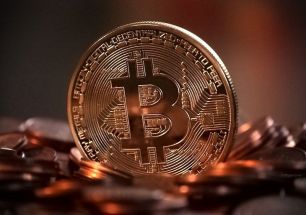Foreign debt entry boosts reserves stock anew in April

MANILA, Philippines — Proceeds from offshore bonds sold by the government stopped a three-month decline in the Philippines’ foreign reserves in April.
Gross international reserves (GIR) rebounded to $107.25 billion as of the end of last month, up 2.65% from the previous month, the Bangko Sentral ng Pilipinas (BSP) reported on Friday.
Buffer funds are sufficient to fund 12.3 months’ worth of imports of goods and services, while also being equivalent to 7.5 times the country’s short-term external debt due within 3 months or less.
While still below their historic high of over $110 billion, reserves have been hovering at record-levels since last year when subdued imports in tandem with continued inflow of remittances and outsourcing earnings fueled dollar accumulation. With fewer need to settle dollar shipments, the central bank oversaw parked funds ballooned from just $87.86 billion in end-2019.
On one hand, Governor Benjamin Diokno cited the hefty buffers as one of the economy’s convincing defenses against the pandemic’s wrath. On the other however, its persistent rise has also been used to magnify tepid demand at home that leaves importers with no incentive to ship in more goods and services.
Theoretically, it also helps explain a strong peso. With more foreign funds entering the economy and exchanged for pesos, demand for local currency is stoked, pushing up its value. The peso has been closing at P47-level for the past week, reaching a 4-year high at one point. It opened at 47.83 to a dollar on Friday.
In the process, a firmed-up peso helps temper inflation that peaked at a 2-year high of 4.7% in March before steadying at 4.5% in succeeding 2 months. Typically, the BSP would intervene by buying more dollars to keep the peso within its 48-53 forecast band, but analysts said that appeared to be not the case this time. Yet at the same time, it may not be intentional.
“The stronger PHP may not necessarily be a strategy of the BSP to quell the current above-target inflation rate but it certainly has helped capped the impact of imported inflation,” Nicholas Antonio Mapa, senior economist at ING Bank in Manila, said in an email exchange.
“In the coming months, we could see PHP outperforming regional currencies largely due to subdued demand for imports given the outlook for growth with the BSP maintaining its presence in the spot market, with GIR possibly rising further,” he added.
Michael Ricafort, chief economist at Rizal Commercial Banking Corp., agreed with Mapa, saying that the peso’s strong performance may only be helping “lower import prices and inflation.”
Economic managers are set to meet next Tuesday to reassess economic targets, following a disappointing 4.2% contraction in the first quarter that many observers expected to have been slower. On BSP’s part, monetary officials already jacked up its GIR yearend forecast to $114 billion, a new high if realized, from just $106 billion seen last December.
Apart from most tradeable foreign currencies like the US dollar, euro and yen, GIR is composed gold, investments, and fund placements at the International Monetary Fund, which can be used for emergencies.
- Latest
- Trending

























